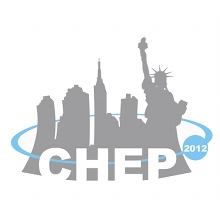Speaker
Stephan G. Hageboeck
(University of Bonn)
Description
Three dimensional image reconstruction in medical imaging applies sophisticated filter algorithms to linear trajectories of coincident photon pairs in PET. The goal is to reconstruct an image of a source density distribution.
In a similar manner, tracks in particle physics originate from vertices that need to be distinguished from background track combinations.
We investigate if methods from medical imaging can be applied to vertex reconstruction in high energy proton collisions at the large hadron collider.
Therefore, a new method of vertex finding has been developed based on a three dimensional filtered backprojection algorithm. It has been compared to standard vertex reconstruction methods of the RAVE package.
We tested the performance of the vertex finding algorithms as a function of instantaneous luminosity using simulated LHC collisions. Tracks in these collisions resemble a simplified detector model that simulates the tracking performance of e.g. ATLAS or CMS.
Our talk discusses the similarities between medical image reconstruction and vertexing and presents results with both standard and medical imaging inspired finders. We discuss the similarities and differences of our method compared to David J. Jackson's ZV-Top algorithm.
| Student? Enter 'yes'. See http://goo.gl/MVv53 | yes |
|---|
Authors
Dr
Eckhard Von Toerne
(Universitaet Bonn (DE))
Harris Kagan
(Ohio State University)
Stephan G. Hageboeck
(University of Bonn)
